The Science of Henna and Hair
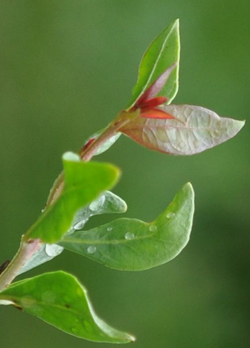 |
What is Henna? Henna, Lawsonia inermis leaves may be used fresh, though they are more often harvested, dried, and powdered. When pulverized henna leaves, fresh or dried, are mixed with a mildly acidic fruit juice, the lawsone molecules in the henna will be made available for dyeing. If you put henna paste on skin or hair, the lawsone molecules will migrate from the plant pulp, into keratin, leaving a red-orange stain. This action is similar to putting a wet teabag on a white tablecloth. The longer you leave the wet teabag on the tablecloth, the darker the stain. The longer you leave the henna paste on skin or hair, the more lawsone molecules will have the opportunity to migrate into the keratin,though six hours generally is enough for maximum absorption of henna. As more lawsone molecules migrate into keratin, the more saturated and rich the color. Click on the image, and the links above and below to learn more about henna. Exactly how does henna 'work'? The Chemistry of Henna. |
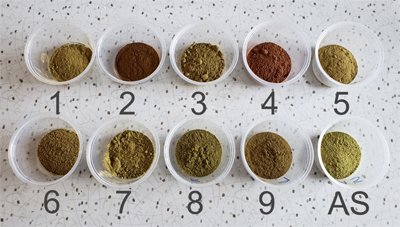 |
There is a wide variety of products available for coloring hair which claim to be pure henna, or which claim to contain pure henna powder along with additional natural plant ingredients. There is no international standard for what can be marketed as henna, and it is often difficult to tell which products are what they claim to be. Many henna for hair products lack an ingredient declaration. A package may show only some ingredients or have no ingredients list at all. |
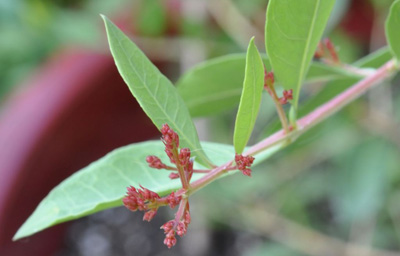 |
The Botany of Henna Where and how do you grow henna? Can you grow henna in your garden? Henna is Lawsonia inermis Fam. Lythraceae, a monotypic genus, the single example being L. inermis,2 native to North and East Africa, introduced and cultivated in the Persian Gulf region, the Arabian Peninsula, the Levant, and South Asia.3 It grows in semi-arid tropical zones, in dry sandy, iron-rich soils, and is adapted to extended drought. It does not tolerate frost and thrives where temperatures are between 11C and 45C. Henna is a biennial dicotyledonous, herbaceous, shrub-like desert tree. It will naturally grow six to twenty feet in height; under cultivation the tree is pruned once or twice a year to a short bush to produce more henna leaves per hectare. |
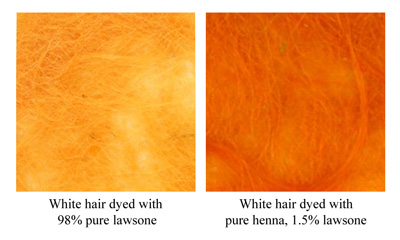 |
The Phytochemistry of Henna Page 17: The Phytochemistry of Henna Other than lawsone, what occurs naturally in henna? The naphthoquinones in henna have received the greatest research attention, as the dye properties, antimicrobial, and strong antioxidant effects proceed from these. Henna contains a number of naphthoquinones including 2-methoxy-3-methyl- 1,4-naphthoquinone and lawsone (2-hydroxy-1,4-naphthoquinone). These henna naphthoquinones are derived from naphthalenes. A small number of naphthalenes, lawsoniaside (1,2,4-trihydroxynaphthalene-1,4-di-β-D-glucopyranoside) 1,2,4-trihydroxynaphthalene-1-O-β-D-glucopyranoside three methyl naphthalene carboxylates, lawsonaphthoate A-C, and 1,2-dihydroxy-4-Oglucosyloxynaphthalenehave been isolated from henna stems and leaves. |
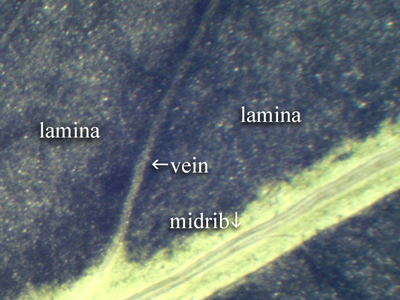 |
Henna
products in the marketplace frequently contain unlisted additives and
adulterants, and the millingand sifting varies with particles from 0.2
mm to over 3 mm. Consumers become frustrated by henna products’
coarse sift, sand, problematic interactions with chemical dyes, and
unpredictable, fading results. The public understanding of what is
henna is further misinformed by false advertising claims made by by
exporters and retailers. Ancient SunriseŽ Chapter 5: Plants that Dye Hair Page 5: Henna, Lawsonia Inermis |
| Ancient SunriseŽ Chapter 3: Compound Henna Go to these pages these to learn about the addition of metallic salts and oxidative dyes to henna, how these created conflicts with chemical hair dye, and well as confusion about what henna actually is. How did dye formulators first change henna colors to brown and black with metallic salts?
Index of specific topic in this chapter: Pag 3: Compound henna, rasticks, henna-reng, henna-rasticks, and metallic salts Page 33: Henna mislabeling, misinformation and disinformation Page 50: Para-phenylenediamine and henna Page 87: Walnut, Silver Nitrate, and Para-phenylenediamine as Brunette Hair Dye |
|
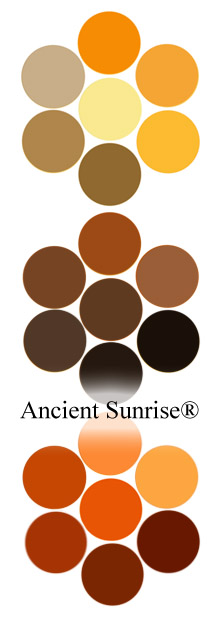 |
Ancient SunriseŽ Chapter 5: Plants that Dye Hair
This chapter discusses henna, indigo, and
cassia, (lawsonia
inermis, indigofera
tinctoria, and cassia
obovata) and the chemistry of each of these dye plants.
Understanding the botany of these plants will help you
understand how to get the best results from your henna hair
dye.
Index of specific topics in this chapter: Page 3: Three Plants Dye Hair: Henna, Indigo, and Cassia
These three plants all can be used to dye hair, but they have different characteristics, so is you try to just put the different powders in a mix and add hot water, you will get inferior results that fade quickly and go brassy. Page 5: Henna, Lawsonia Inermis What is a Michal Addition and acidic hydrolysis and why are they crucial to getting the best results from your henna? How do you make these happen? Page 15: Indigo, Indigofera Tinctoria What is indigo, and why do you have to mix it separately and differently from henna? Page 21: Cassia Obovata What is cassia, how do you mix it, and what will it do for YOUR hair? |
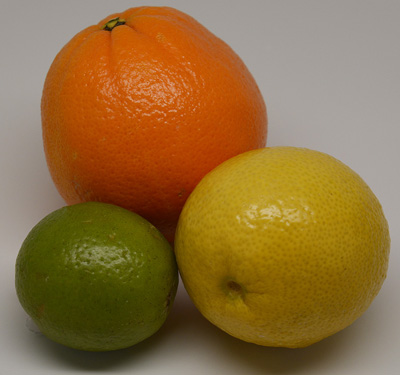 |
Ancient SunriseŽ Chapter 6 : Henna and Acidic Mixes These pages discusses the necessary chemistry of mixing henna and cassia with a mildly acidic liquid. This chapter discusses several sources of fruit acids, and how each has a different effect on henna. Index of specific topics in this chapter: Page 3: Henna, Cassia, and Mildly Acidic Mixes Page 5: Citrus Fruits and Citric Acid Page 7: Ancient SunriseŽ Amla, Emblica Officinalis Page 8: Acids with Anthocyanins and Antioxidants Page 11: Ancient SunriseŽ Kristalovino and Ancient SunriseŽ Malluma Kristalovino Page 13: What Acids Do You Have Around the House? Page 14: Coffee, Wine, Yogurt, Oil and Eggs: Don’t Bother (totally useless) |
